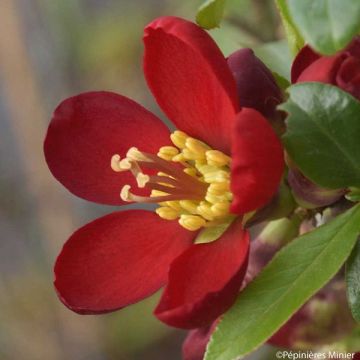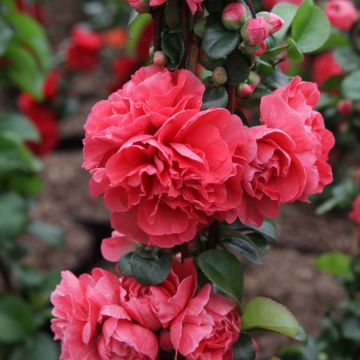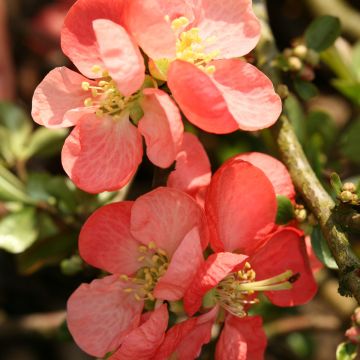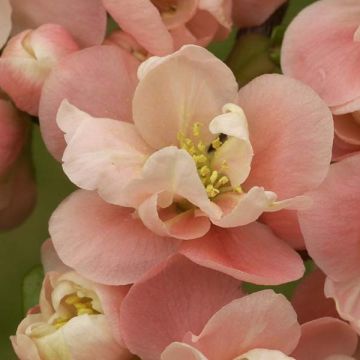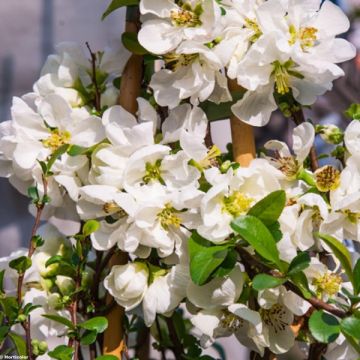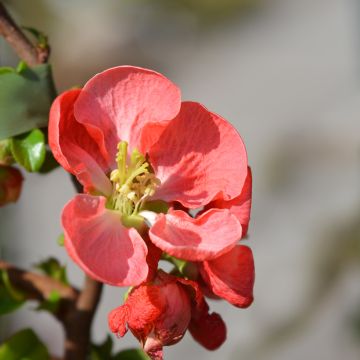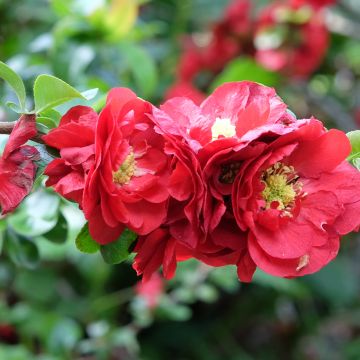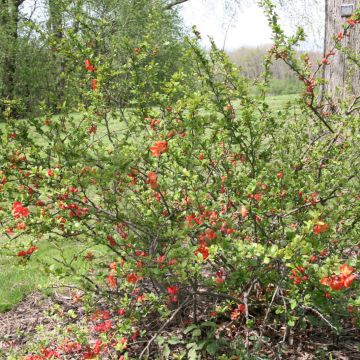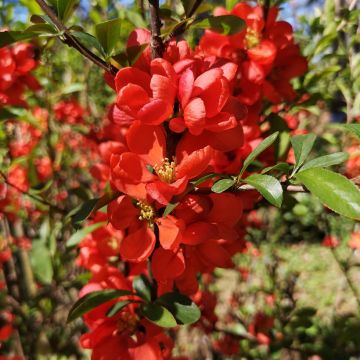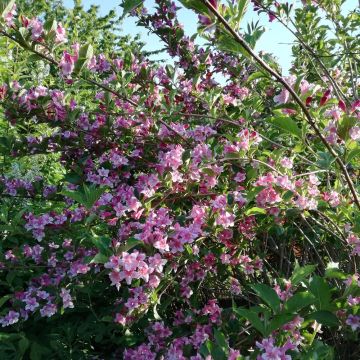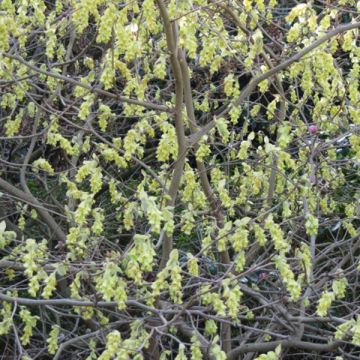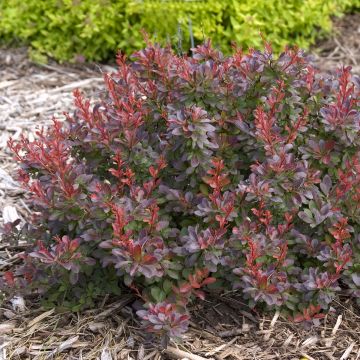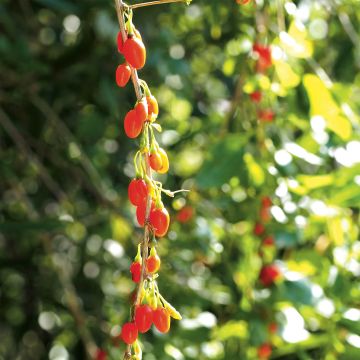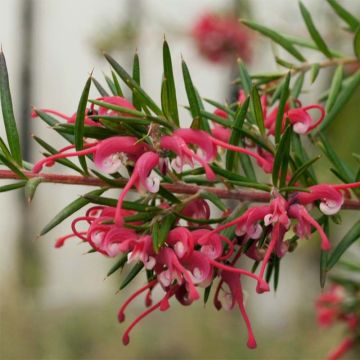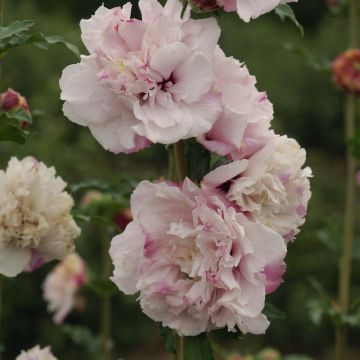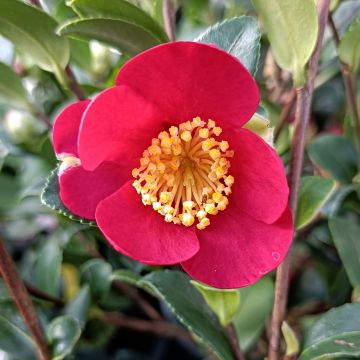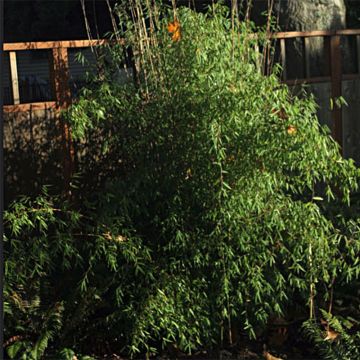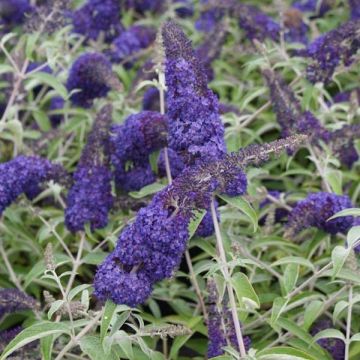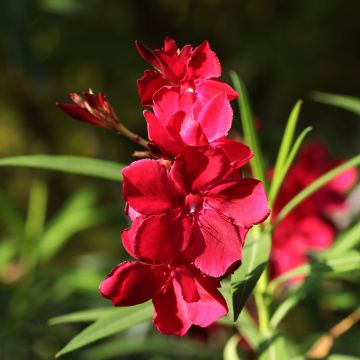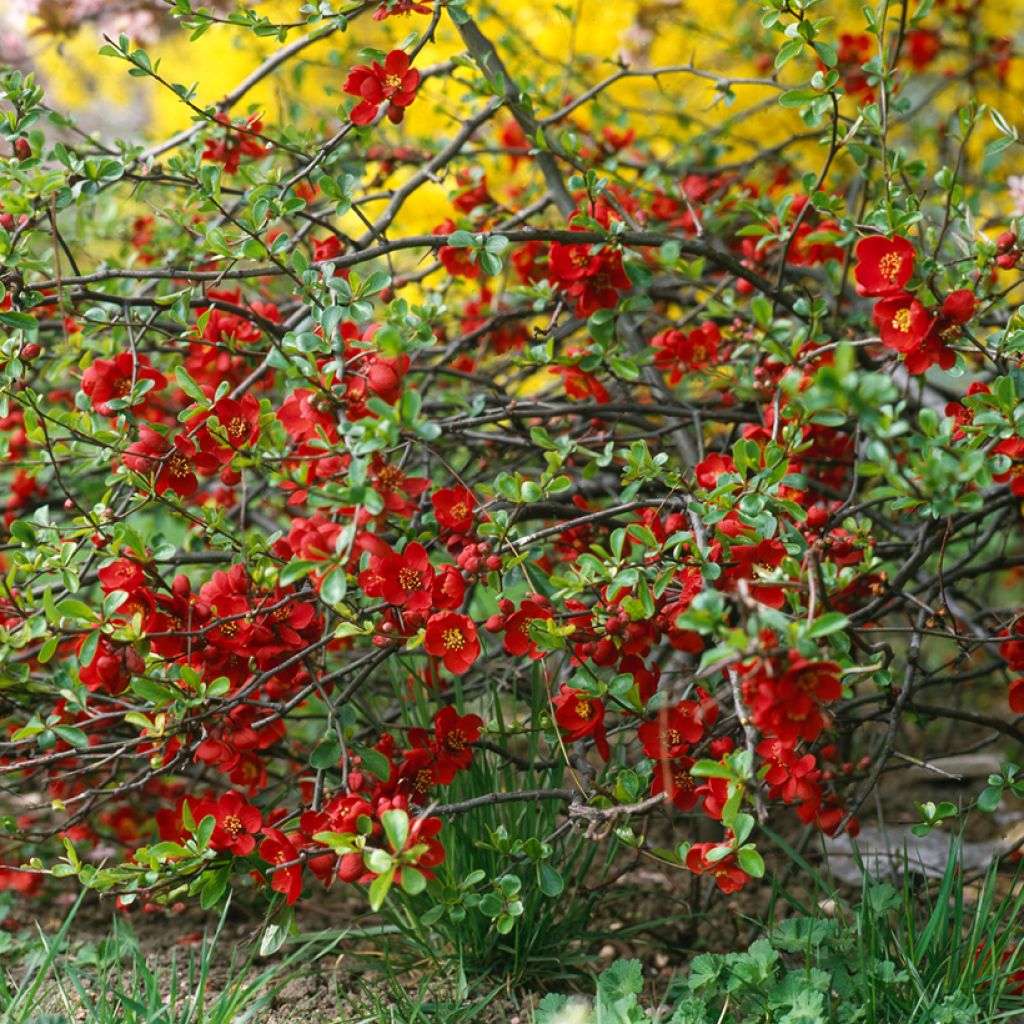

Chaenomeles superba Crimson and Gold - Flowering Quince
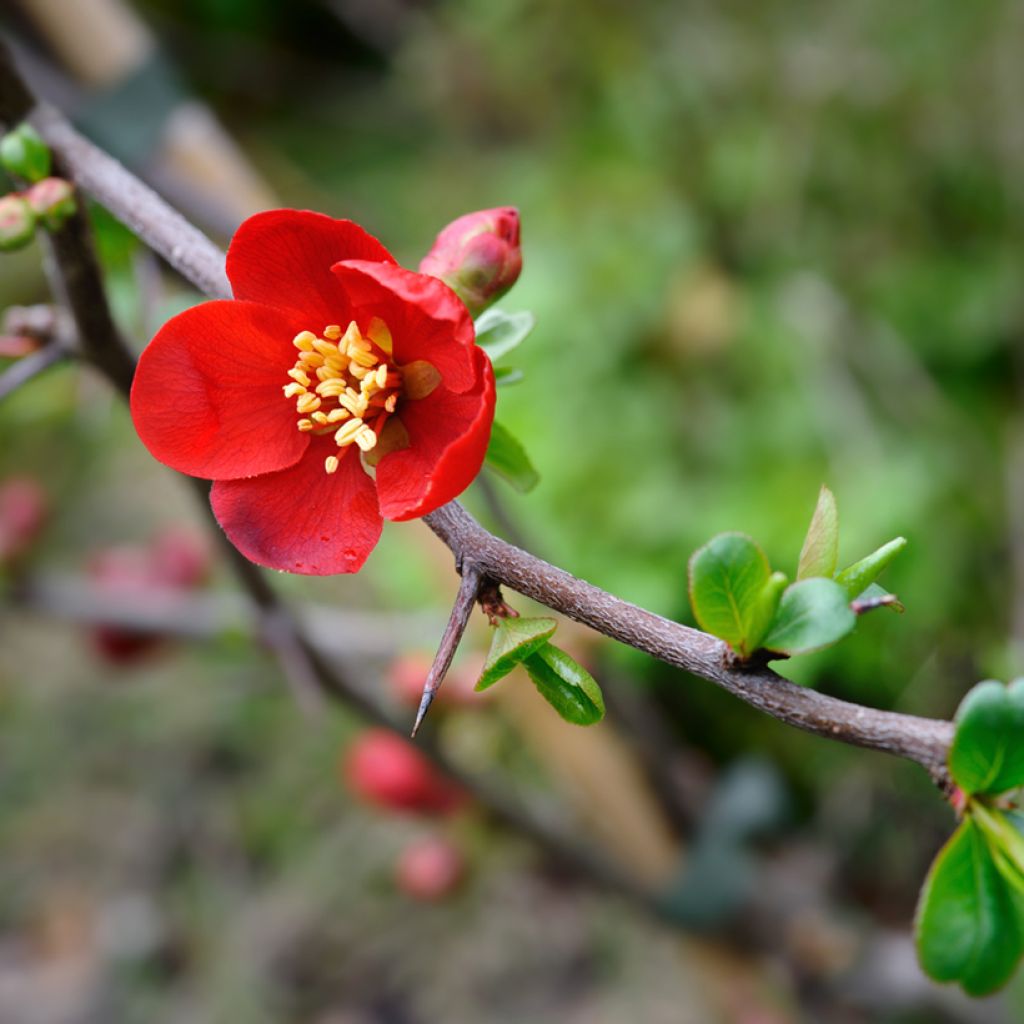

Chaenomeles superba Crimson and Gold - Flowering Quince
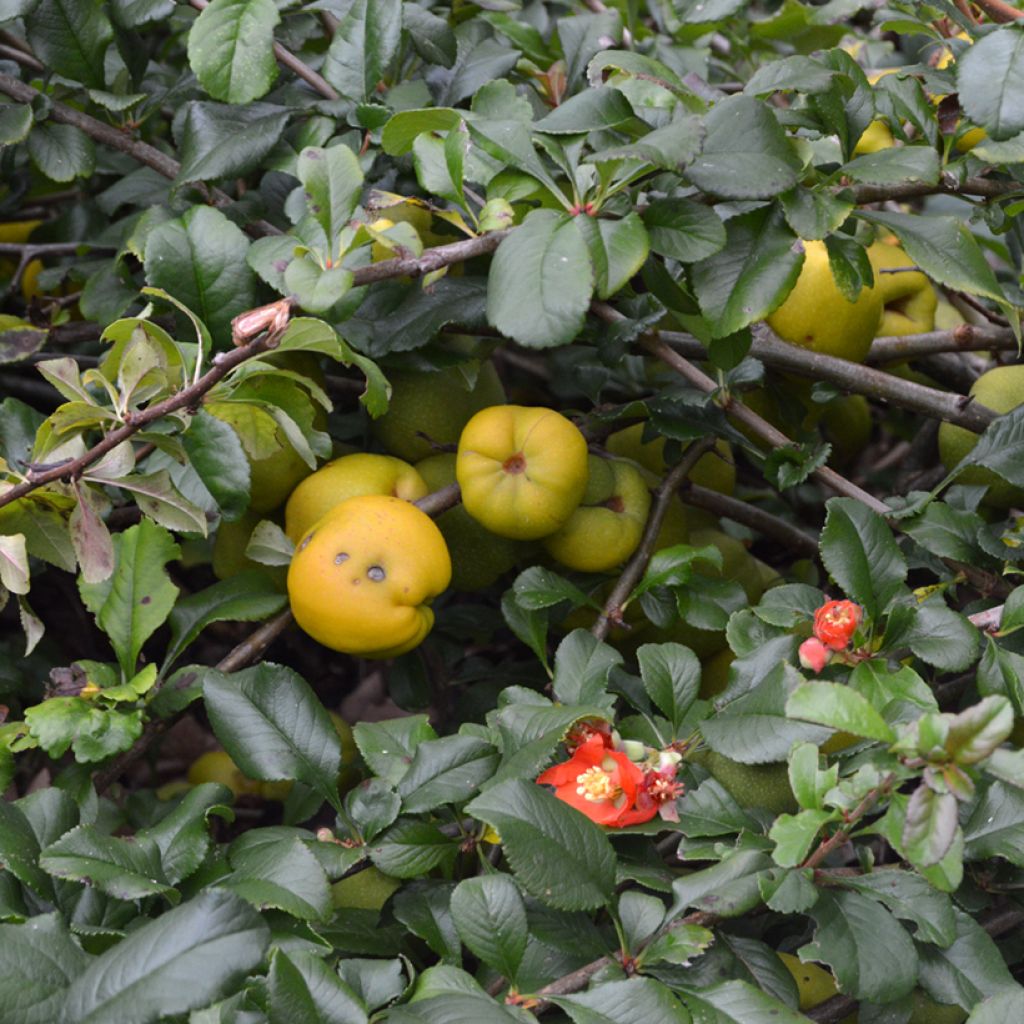

Chaenomeles superba Crimson and Gold - Flowering Quince
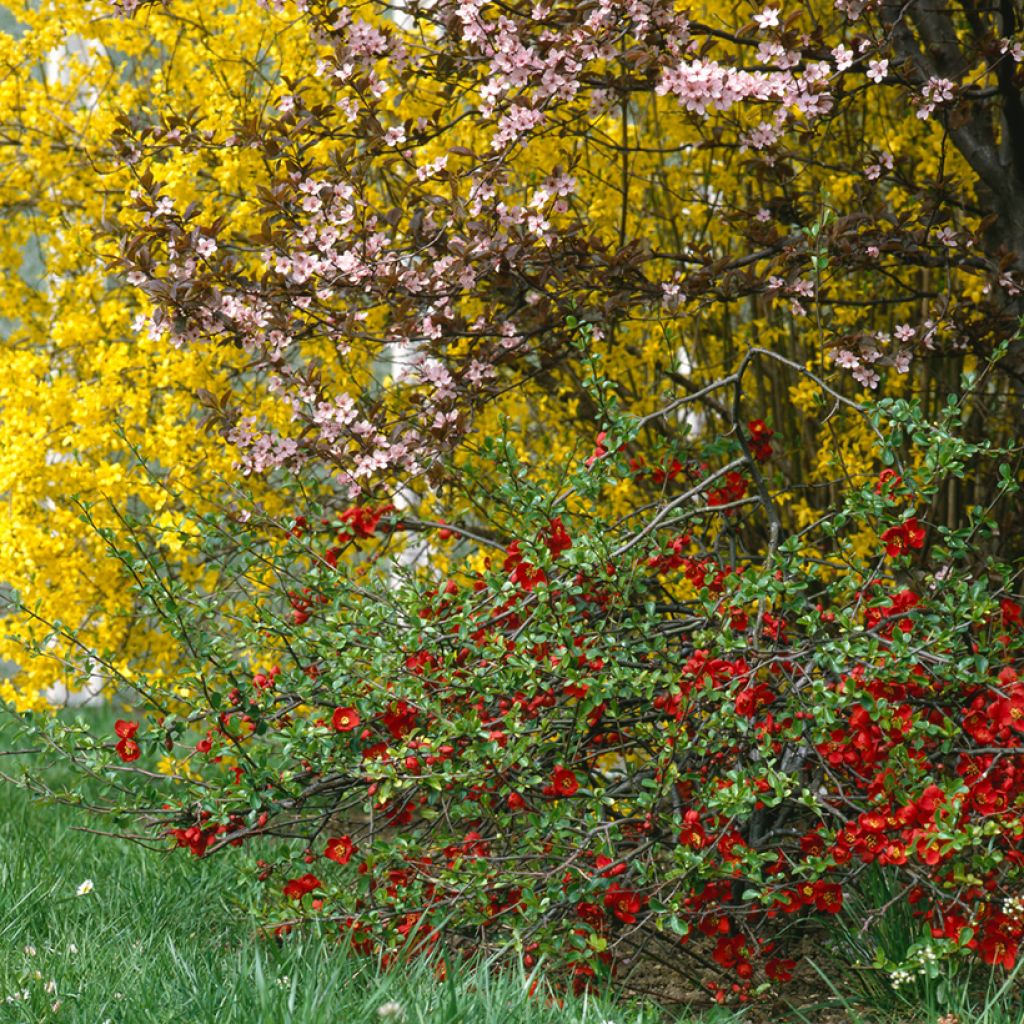

Chaenomeles superba Crimson and Gold - Flowering Quince
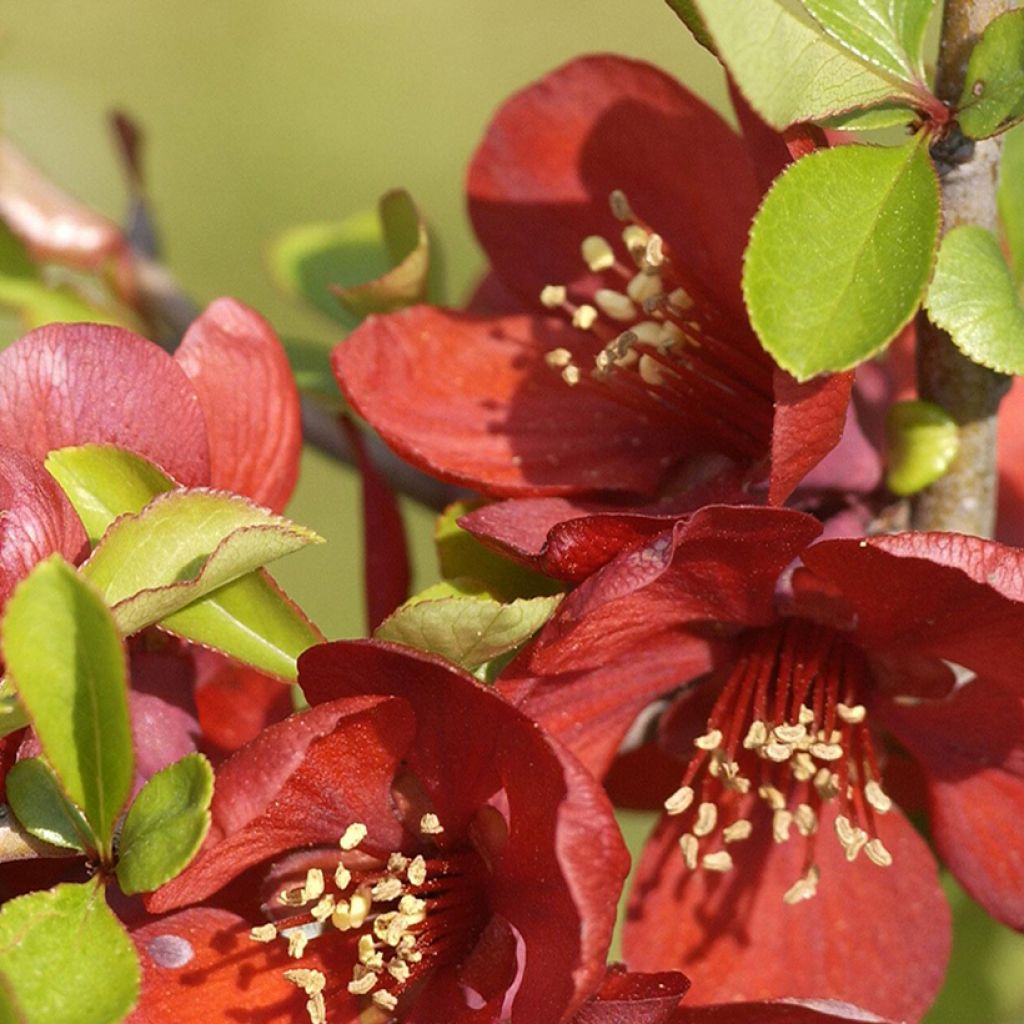

Cognassier du Japon Crimson and Gold - Chaenomeles superba
Chaenomeles superba Crimson and Gold - Flowering Quince
Chaenomeles x superba Crimson and Gold
Japanese Quince, Flowering quince
Great height with stakes, beautiful flowers, good packaging.
danièle, 14/09/2024
This item cannot be shipped to the selected country
Delivery charge from €5.90
More information
Schedule delivery date,
and select date in basket
This plant carries a 24 months recovery warranty
More information
We guarantee the quality of our plants for a full growing cycle, and will replace at our expense any plant that fails to recover under normal climatic and planting conditions.
From €5.90 for pickup delivery and €6.90 for home delivery
Express home delivery from €8.90.

Does this plant fit my garden?
Set up your Plantfit profile →
Description
Chaenomeles x speciosa 'Crimson and Gold' is a hardy variety with dark red single flowers. Its shining flowers adorned with beautiful yellow stamens announce the beginning of spring along with forsythias and winter viburnum. Its small, aromatic, yellow quinces can be prepared as jelly. It is robust and undemanding. It will always find a place in an informal hedge, hedgerow or defensive hedge. It also delights bonsai enthusiasts, and its flowering branches are magnificent in bouquets.
Chaenomeles speciosa is a thorny bush of the Rosaceae family, with fairly rapid growth. 'Crimson and Gold' is a horticultural selection bred in California. It forms a bush with a slightly loose habit in its early years, then thickens and widens by developing suckers at the base. Its branches are dense, somewhat bushy, and will reach about 1.5m (5ft) in height and 2m (7ft) in width by the age of 10. Its flowering extends from late March to May, for 3 to 4 weeks. The fragrant flowers reach 3 to 5cm (1 to 2in) in diameter. They are composed of 5 petals that overlap to form a hollow cup. Each flower partially opens, revealing a heart full of yellow stamens. The flowers are borne on very short, or even absent, pedicels, and they are grouped in 3 to 5 on the previous year's branches. The leaves develop just after the flowers. They are coppery at bud burst and are narrow to lanceolate, 3 to 9cm (1 to 4in) long and 1.5 to 5cm (1 to 2in) wide, with a beautiful shiny dark green on their upper surface. The flowering is followed by the formation of small quinces, 5 to 6cm (2in) in size. The fruit is initially green, before turning yellow and aromatic at maturity. They are edible after cooking.
Japanese quinces, like Forsythias, Abeliophyllum, and Japanese kerrias, are among the first to provide beautiful spring flowers, so eagerly awaited after a long winter. They are comfortable in all climates, as they are not afraid of heat or cold. They can be grown both in isolation and in flower beds. 'Crimson and Gold' can be used as a hedge, in the company of fragrant shrubs such as winter honeysuckle (Lonicera fragrantissima) that precedes it, rugosa roses and white lilacs that will take over its flowering, and buddleias to follow. It can also be trained against a wall, near the house, combined with a winter jasmine, to be enjoyed with each passing.
Uses, properties:
An extract called cananga essence is obtained from the fruit, not to be confused with the one derived from Cananga odorata, the Ylang-ylang. The bitter and astringent raw fruits are unfit for consumption as they are. However, once cooked, they are edible and can be used to make jellies or preserves. In Chinese medicine, dried fruits are used, among other things, for their anti-inflammatory, anti-bacterial, analgesic, and liver-protective properties.
Report an error about the product description
Chaenomeles superba Crimson and Gold - Flowering Quince in pictures
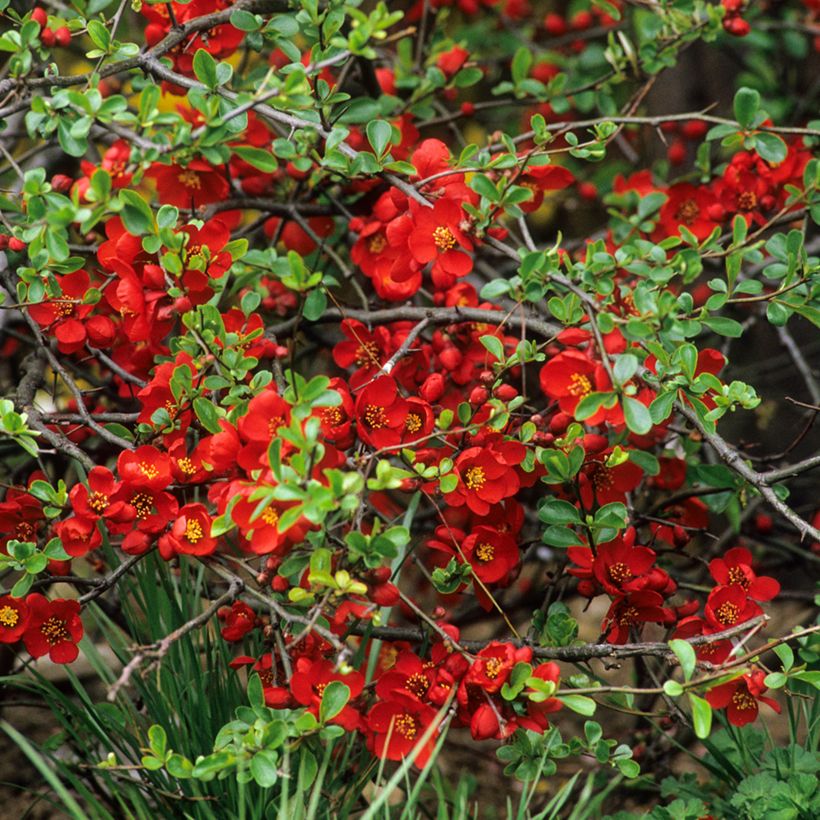



Plant habit
Flowering
Foliage
Botanical data
Chaenomeles
x superba
Crimson and Gold
Rosaceae
Japanese Quince, Flowering quince
Cultivar or hybrid
Other Chaenomeles - Quince tree
Planting and care
Chaenomeles x superba 'Crimson and Gold' thrives in the sun. You can also grow it in partial shade, in sunnier regions. Plant it in ordinary, moist but well-drained soil. It also tolerates limestone. It is a very easy plant to grow. When planting, mix your soil with compost. When grown as a hedge, space the plants 80cm (32in) apart. In a flower bed, the plants should be spaced 40 to 60cm (16 to 24in) apart. This Japanese quince is resistant to pollution. It requires little watering as it is drought-resistant.
Planting period
Intended location
Care
-
, onOrder confirmed
Reply from on Promesse de fleurs
Hedge shrubs
Haven't found what you were looking for?
Hardiness is the lowest winter temperature a plant can endure without suffering serious damage or even dying. However, hardiness is affected by location (a sheltered area, such as a patio), protection (winter cover) and soil type (hardiness is improved by well-drained soil).

Photo Sharing Terms & Conditions
In order to encourage gardeners to interact and share their experiences, Promesse de fleurs offers various media enabling content to be uploaded onto its Site - in particular via the ‘Photo sharing’ module.
The User agrees to refrain from:
- Posting any content that is illegal, prejudicial, insulting, racist, inciteful to hatred, revisionist, contrary to public decency, that infringes on privacy or on the privacy rights of third parties, in particular the publicity rights of persons and goods, intellectual property rights, or the right to privacy.
- Submitting content on behalf of a third party;
- Impersonate the identity of a third party and/or publish any personal information about a third party;
In general, the User undertakes to refrain from any unethical behaviour.
All Content (in particular text, comments, files, images, photos, videos, creative works, etc.), which may be subject to property or intellectual property rights, image or other private rights, shall remain the property of the User, subject to the limited rights granted by the terms of the licence granted by Promesse de fleurs as stated below. Users are at liberty to publish or not to publish such Content on the Site, notably via the ‘Photo Sharing’ facility, and accept that this Content shall be made public and freely accessible, notably on the Internet.
Users further acknowledge, undertake to have ,and guarantee that they hold all necessary rights and permissions to publish such material on the Site, in particular with regard to the legislation in force pertaining to any privacy, property, intellectual property, image, or contractual rights, or rights of any other nature. By publishing such Content on the Site, Users acknowledge accepting full liability as publishers of the Content within the meaning of the law, and grant Promesse de fleurs, free of charge, an inclusive, worldwide licence for the said Content for the entire duration of its publication, including all reproduction, representation, up/downloading, displaying, performing, transmission, and storage rights.
Users also grant permission for their name to be linked to the Content and accept that this link may not always be made available.
By engaging in posting material, Users consent to their Content becoming automatically accessible on the Internet, in particular on other sites and/or blogs and/or web pages of the Promesse de fleurs site, including in particular social pages and the Promesse de fleurs catalogue.
Users may secure the removal of entrusted content free of charge by issuing a simple request via our contact form.
The flowering period indicated on our website applies to countries and regions located in USDA zone 8 (France, the United Kingdom, Ireland, the Netherlands, etc.)
It will vary according to where you live:
- In zones 9 to 10 (Italy, Spain, Greece, etc.), flowering will occur about 2 to 4 weeks earlier.
- In zones 6 to 7 (Germany, Poland, Slovenia, and lower mountainous regions), flowering will be delayed by 2 to 3 weeks.
- In zone 5 (Central Europe, Scandinavia), blooming will be delayed by 3 to 5 weeks.
In temperate climates, pruning of spring-flowering shrubs (forsythia, spireas, etc.) should be done just after flowering.
Pruning of summer-flowering shrubs (Indian Lilac, Perovskia, etc.) can be done in winter or spring.
In cold regions as well as with frost-sensitive plants, avoid pruning too early when severe frosts may still occur.
The planting period indicated on our website applies to countries and regions located in USDA zone 8 (France, United Kingdom, Ireland, Netherlands).
It will vary according to where you live:
- In Mediterranean zones (Marseille, Madrid, Milan, etc.), autumn and winter are the best planting periods.
- In continental zones (Strasbourg, Munich, Vienna, etc.), delay planting by 2 to 3 weeks in spring and bring it forward by 2 to 4 weeks in autumn.
- In mountainous regions (the Alps, Pyrenees, Carpathians, etc.), it is best to plant in late spring (May-June) or late summer (August-September).
The harvesting period indicated on our website applies to countries and regions in USDA zone 8 (France, England, Ireland, the Netherlands).
In colder areas (Scandinavia, Poland, Austria...) fruit and vegetable harvests are likely to be delayed by 3-4 weeks.
In warmer areas (Italy, Spain, Greece, etc.), harvesting will probably take place earlier, depending on weather conditions.
The sowing periods indicated on our website apply to countries and regions within USDA Zone 8 (France, UK, Ireland, Netherlands).
In colder areas (Scandinavia, Poland, Austria...), delay any outdoor sowing by 3-4 weeks, or sow under glass.
In warmer climes (Italy, Spain, Greece, etc.), bring outdoor sowing forward by a few weeks.

































